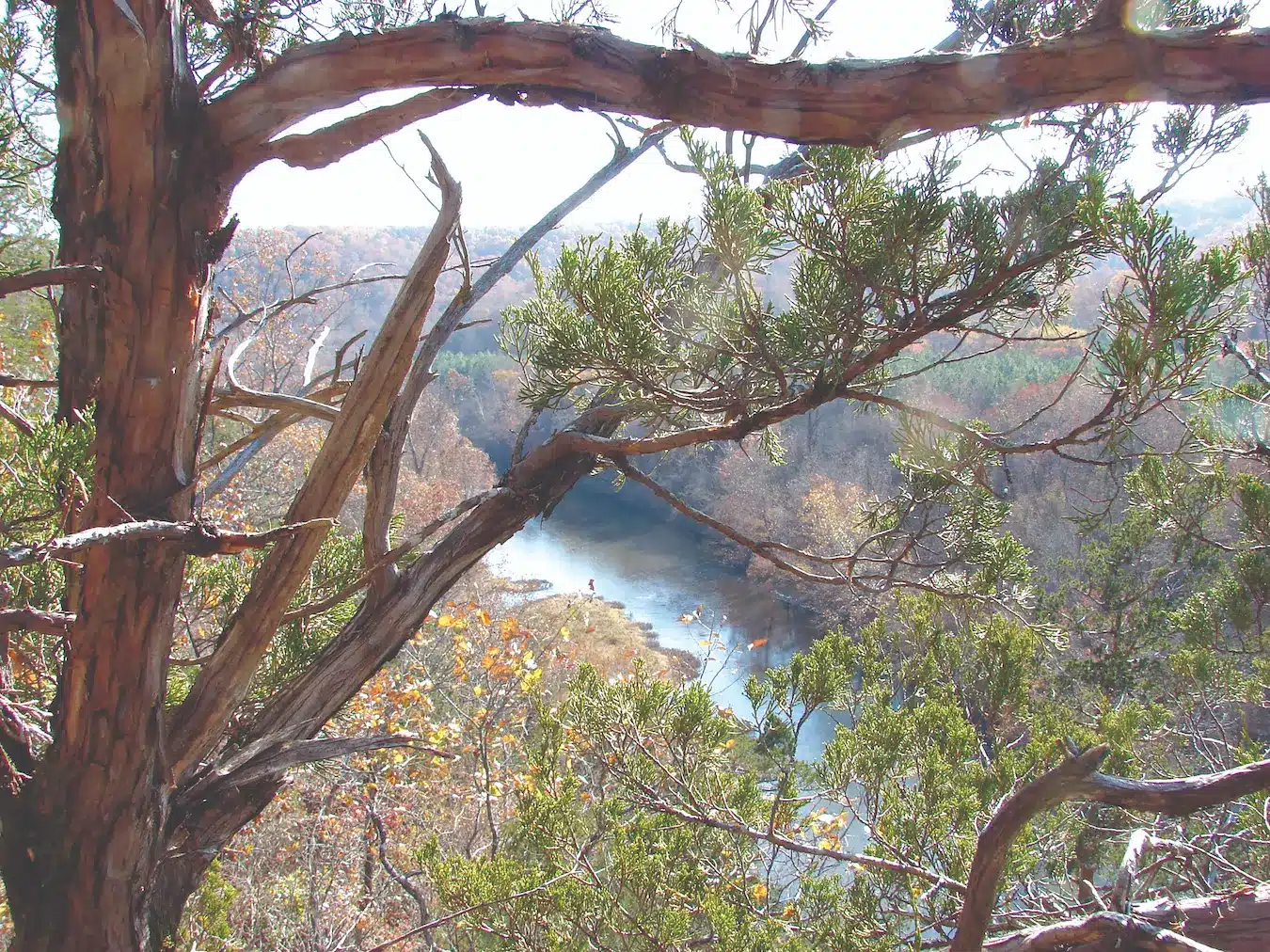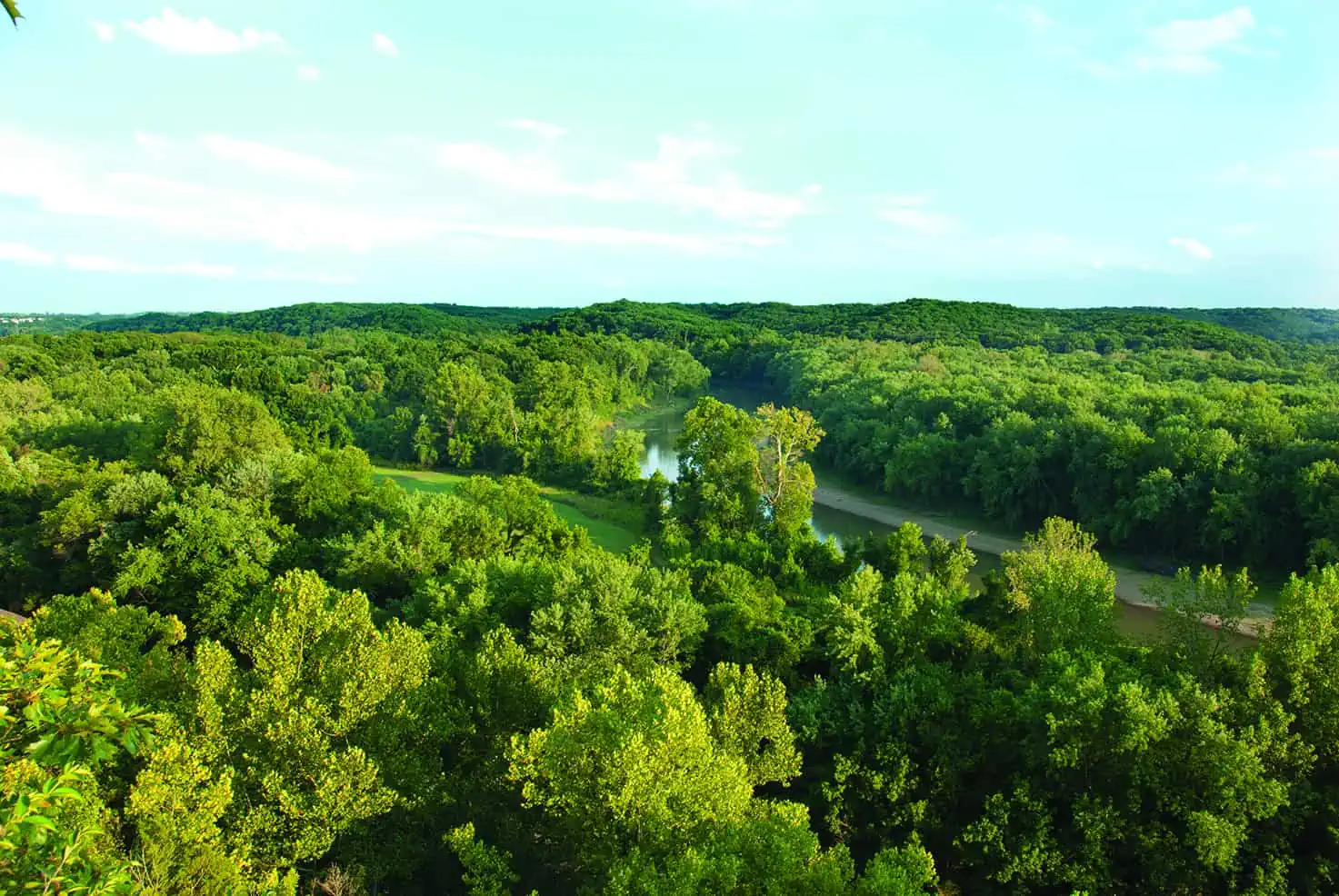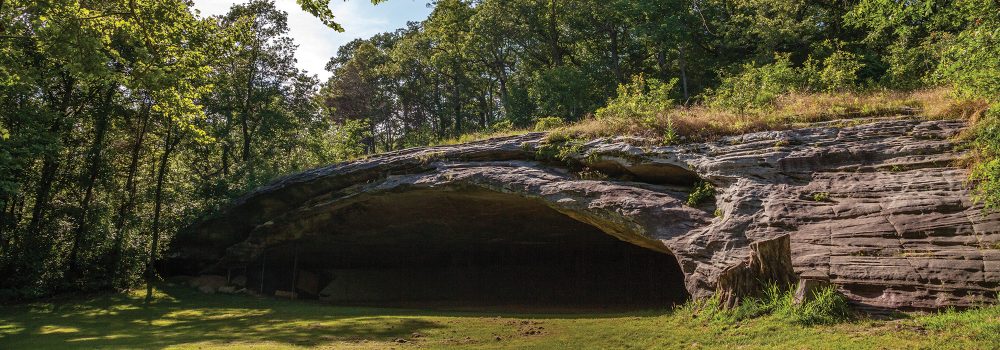Natural prairie is the headliner at this state park, but the bison, elk, birds, and flowers are also stunning. Prairie State Park is a unique place, dedicated as a living tribute to a nearly extinguished native landscape.

SPRING IS A GORGEOUS TIME on the prairie.
Before the last of winter’s occasional snow, the early sedges bring a tinge of green among the white spots on the hills. These add an upright dimension to ground cleaned by prairie fires of last year’s dead grasses. Soon the green spreads and envelops the land.
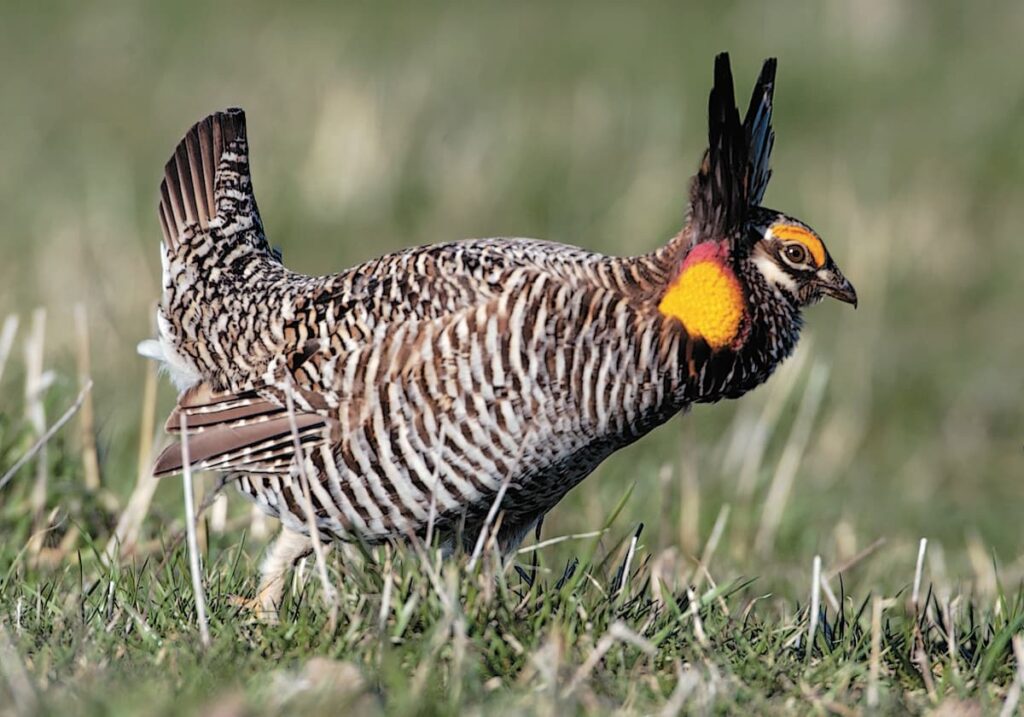
Splashes of color appear: scattered bouquets of purple violets, bright sulfur-yellow puccoons, and pale yellow wild indigos. The male prairie chickens begin their booming, inflating their bright orange air sacs with a call that can be heard a half-mile away as they dance and battle for the attention of females. One morning the hillsides are tinted red by Indian paintbrush, and meadowlark and dickcissel songs float on the spring air. Minute grasshopper sparrows busily build nests, and briefly, the buzzing song of the rare prairie mole cricket floats out of the twilight.
This is the essence of Prairie State Park, one of the few places left where this tallgrass drama still unfolds so completely. And it happens not just in spring, but daily, with a progression of sights and sounds that become a song of the seasons—living visions of Missouri’s natural past preserved in this park for our future.
By May and June, the grasses begin a growth spurt that easily over-tops the low flowers of spring. When knee-deep, they toss and blow in every wind, tirelessly sending waves rippling and racing across the hillsides—then out of sight over the far horizons. Next, a taller series of wildflowers springs through the grass, this time in mass profusion. These easily give late spring the distinction of having the most spec- tacular flower display of the year. Yellow coreopsis, white beard-tongue, false dragonhead, pale purple coneflower, sensitive brier, prairie phlox, scurfy pea, lead plant, and many more extend in all directions, to every horizon. Bison calves frolic among them in their uncommonly awkward fashion, following their mothers across the park. Northern harriers still dive, but now into blackberry thickets, where their tiny fluff-ball hatchlings are hidden and waiting to be fed.
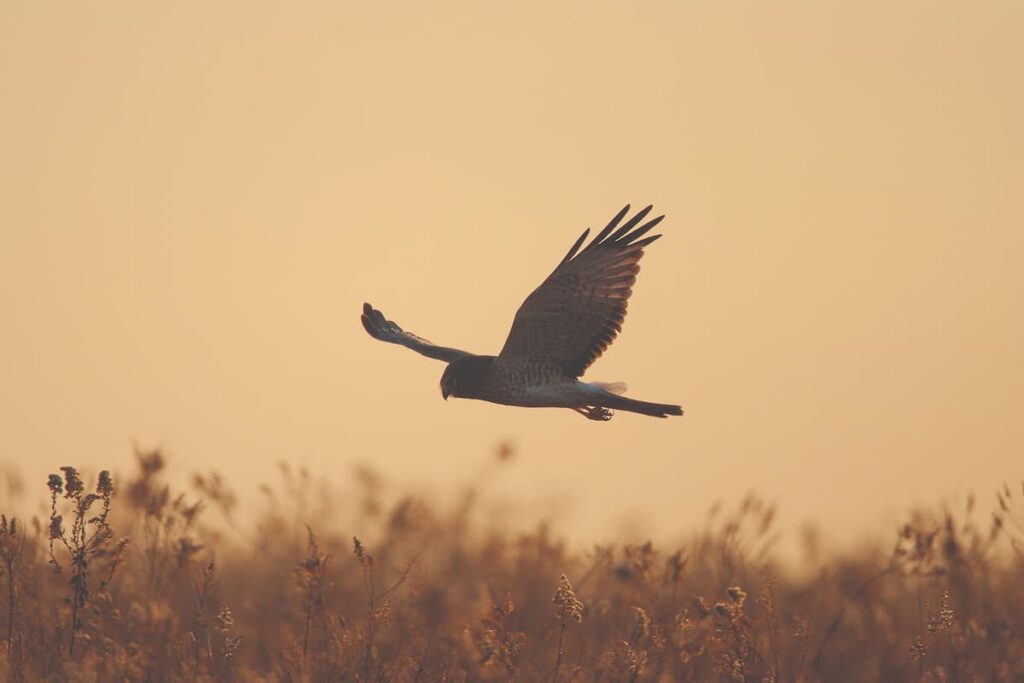
By midsummer, as these flowers fade, the whole prairie world turns emerald. Now the grasses reign supreme, and the grassy waves still tirelessly race the breeze. When clouds drift, the effect is almost dizzying. In fact, everything seems to move—the hawks, the songbirds, the bison—all building during this time of plenty for the coming winter. As big as the land seems, though, it is sometimes dwarfed by the power and fury of summer thunderstorms. And through it all, the call of the meadowlark becomes the song of the season.
Fall may be the prettiest season on the prairie. Emerald-green grasses turn brilliant orange, red, bronze, and gold. During the summer, they whisper or rustle in the wind. In fall, they rattle and toss to and fro. The land seems restless and alive, its color more intense and consuming than that of forests. Standing in a swale in the midst of this rolling sea of grass, facing the wind and knee-deep in prairie asters, you are just a speck on land that must stretch to somewhere beyond forever. And all around you, engulfed by the open skies, the annual fall pageant of the prairie begins.
First, there are the northern harriers—prairie hawks that the fall prairie attracts like a magnet. Sometimes near, sometimes far, the hawks glide low, slowly skimming over the top of the grass. Or they hover, suspended, barely cresting some windy knoll—listening. Occasionally, one dives into the grass, and a noisy flock of red-winged blackbirds or a covey of quail erupts.
Beneath the prairie hawks, the bison are in a world of their own. In fall, they are in their best condition of the year. It’s also breeding season, and the bulls are touchy and cantankerous. Sometimes they fight. The ground shakes and the dust flies when two one-ton animals slam full speed into one another.

Deer seem to sprout in the openness. The early morning sun highlights them, ornamenting ridge tops and browsing along the prairie swells and swales. Sometimes you become aware of a collection of eyes, ears, and noses—each looking your way. But since only their heads show, motionless at the surface of that tossing, grassy sea, they look strangely suspended, almost as if the heads are rooted while the land moves around.
Beside them in the distance, a short-eared owl glides home from the hunt, and two coyote heads flash up and are gone with the blink of an eye. They reappear a little farther away, bouncing high for looks above the tall fall grasses. Overhead, shimmering white dots—pelicans—wing their way south.
By late August, these millions of grasses send up their seed stalks—four, six, eight, and in wet places, sometimes ten feet. Other late summer blooms, especially sunflowers, reach even higher to display their heads above the grassy sea to the hummingbirds, butterflies, and moths that must pollinate them.
Even winter is special, with deer everywhere and coyotes howling at night as first one pack and then another sounds off in the distance. The bison in their thick woolly coats have no problem with cold, sleet, or snow, and the tall grasses provide insulation and food for numerous small birds and mammals.
By late winter, the green sedges return, and the spring pageant begins once again.
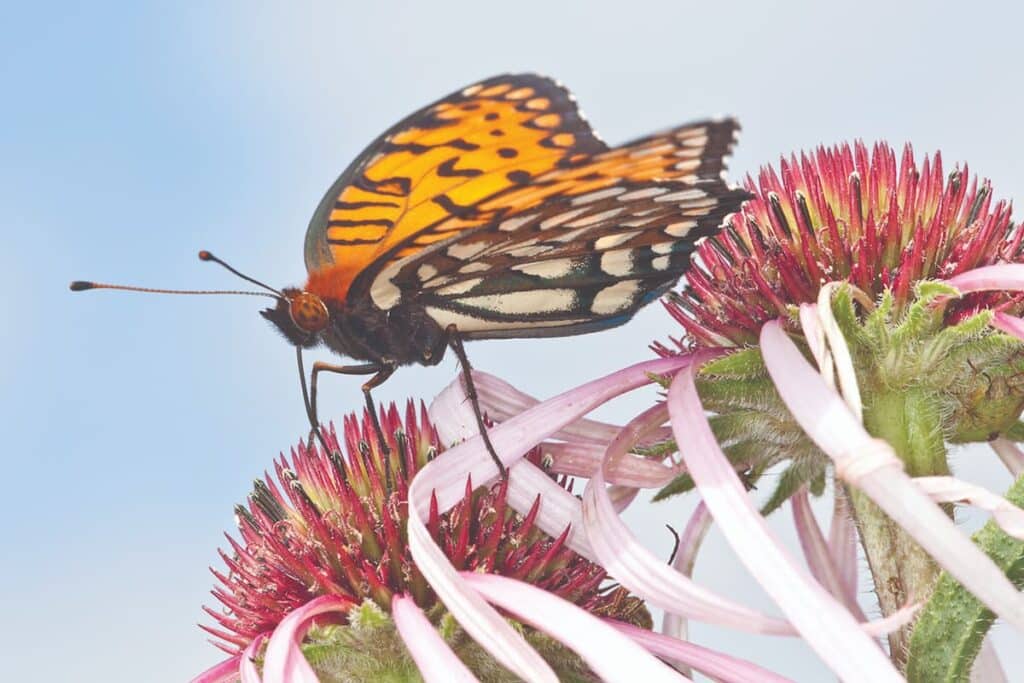
Photo by Donna Brunet
Prairie State Park is a unique place, dedicated as a living tribute to a nearly extinguished native landscape. Missouri’s sweeping prairie panoramas were all but history when this land was acquired in the late 1970s for a park. With so few fragments left—less than 1 percent of the state’s original prairie—it is difficult to imagine that a third of the state’s land surface once was prairie. That is, except when standing in one. Then it becomes much easier to appreciate our loss—and to feel the real value of Prairie State Park. For here, on nearly 4,000 native and restored acres, is Missouri’s largest remaining prairie and our greatest hope for preserving a sense of the scope of these wild grasslands.
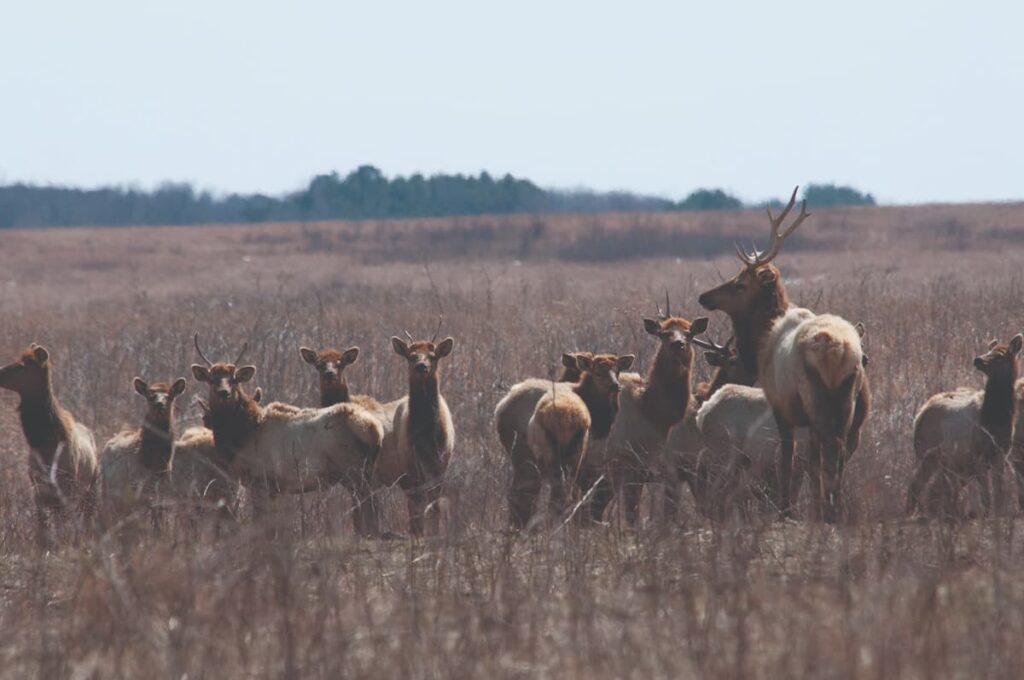
Photo courtesy of Missouri State Parks
Prairie State Park exists because of a happy conjunction of historical circumstance and people’s growing appreciation for the prairie landscape. It is fitting that the park is located in southwestern Missouri’s Barton County, for this county had more land in prairie when the white settlers came than any other county in the state—some 86 percent. These western prairies were Osage Indian hunting grounds during the time of their great village on the hill along the Osage River to the north—now Osage Village State Historic Site. The Osage continued to hunt here even after they gave up their lands farther east in the cession of 1808. White settlement began in Barton County as early as the 1820s, but slowly. The lands now in the park were not taken from the public domain until the 1850s, and even then as whole or half-sections under military bounty and swampland acts that tended to encourage speculative purchase by absentee owners. Most of the land in the park was never tilled.
Major development in this area began in 1880 with the coming of the railroad, which provided access to markets for the region’s coal and crops. Coal production centered around Mindenmines, only a few miles southwest of the park, but there was only limited disturbance on lands now within the park, most of which has been remediated. More happily, a new industry began to flourish: the cutting and curing of the tall prairie grasses for hay, highly desired as fodder for mules, horses, and cattle. The hay could be shipped by rail to markets near and far. The locals proudly aver that by World War I, when Missouri mules were greatly sought for use in crop production and even by the military overseas, the Schreiner Hay Company of Lamar had grown so successful that it had cornered the market for prairie hay. The company operated out of Prairie Center, just southeast of today’s park. The need for mules began to decline with the advent of tractors, but a market for the nutritious prairie hay still existed at stables, racetracks, and stockyards.
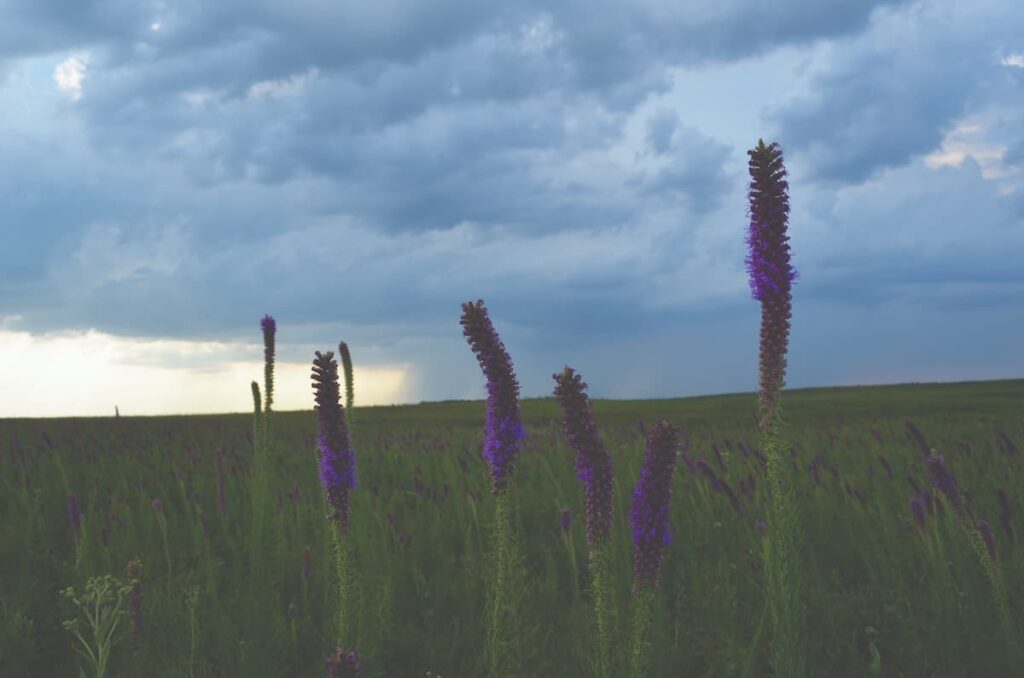
Photo by Tom Uhlenbrock
As recently as the 1960s, more than 30,000 acres of native prairie remained in western Barton County, mostly on land whose owners were proud of their unbroken yet productive hay meadows. But then the chain of benign circumstance began to break. When the price of soybeans soared in the early 1970s, the prairies one by one were put to the plow.
By the late 1970s when state park officials began to seek lands for a prairie park, they feared the best they could do would be an untilled 40-acre tract or two that might in time be restored. But again came a happy conjunction of circumstance. An owner of a key undisturbed tract was suddenly willing to sell, and the Missouri Prairie Foundation and the Nature Conservancy simultaneously became aware of his willingness and the state’s interest. A wealthy benefactor from Connecticut, who had fallen in love with the rolling prairie on her visit to Barton County in 1972, offered an interest-free loan to cover the sale price. Within days, a deal was struck for the core 1,520 acres that by 1980 would be dedicated as Prairie State Park. Katharine Ordway, who put up the money, ultimately gave more than $40 million through the Nature Conservancy and other groups to preserve tallgrass prairie throughout the Midwest at a time when it would otherwise have likely faced annihilation. At the park, subsequent donations and acquisitions over the years brought the acreage to nearly 4,000, including several prairie tracts that had never been plowed and others that have been restored.
At Prairie State Park today, careful clearing of brush and controlled burning deliver some of the best wildflower shows in the state, more spectacular even than those that enchanted Katharine Ordway. Amer- ican bison were reintroduced to the park in 1985, and a small herd of elk was also introduced by 1993. The bison now number up to one hundred, and the elk about twenty. But most important, the park is a place where a prairie landscape can survive—expansive, dynamic, self-renewing, a living tribute to a largely extinct component of our natural past.
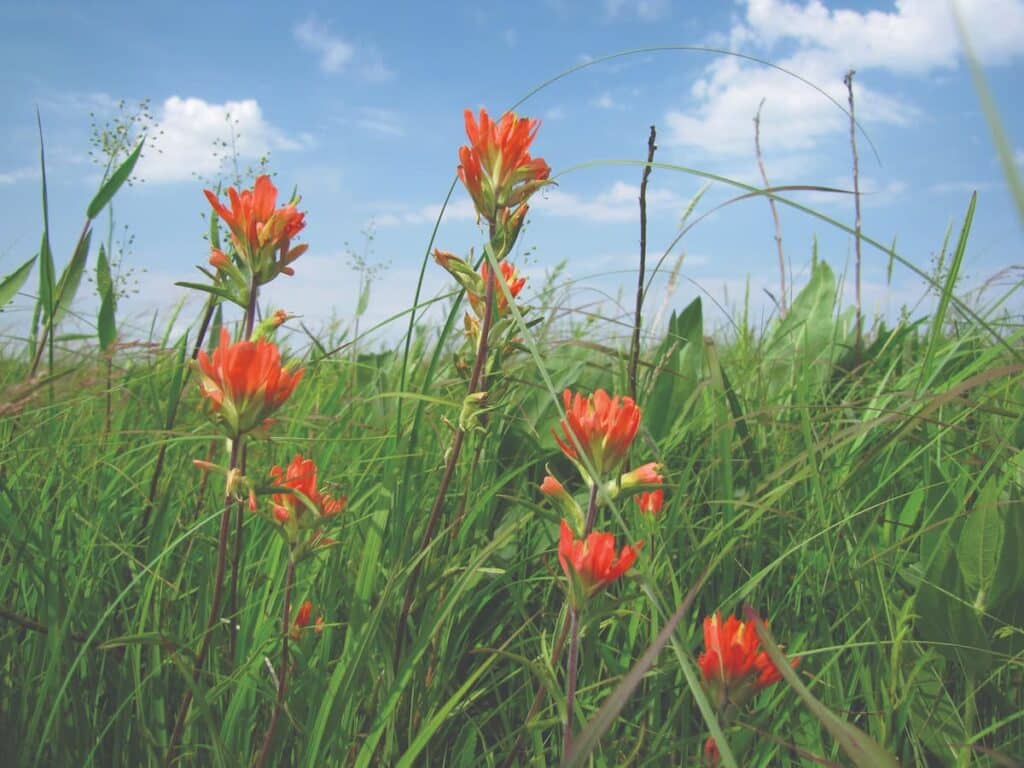
Photo by Matt Faupel
Prairie State Park is for people to enjoy. A nature center tells the prairie story with displays, a diorama, an aquarium, audiovisual programs, and more. Park staff present programs about the prairie and the American Indians who have lived here, and they answer questions about the prairie or lead walks across it. School groups are common by day, as are visitors on trails or along the roadways in the evening, when bison, deer, and prairie birds are most easily seen. Fifteen miles of foot trails, some short and some long, leave from the visitor center and roadside trailheads. These lace the rolling prairie, from its high, dry ridges to its rich, marshy streams. A picnic ground and a small, reservation-only campground lie along one prairie stream, in a small grove near the visitor center.
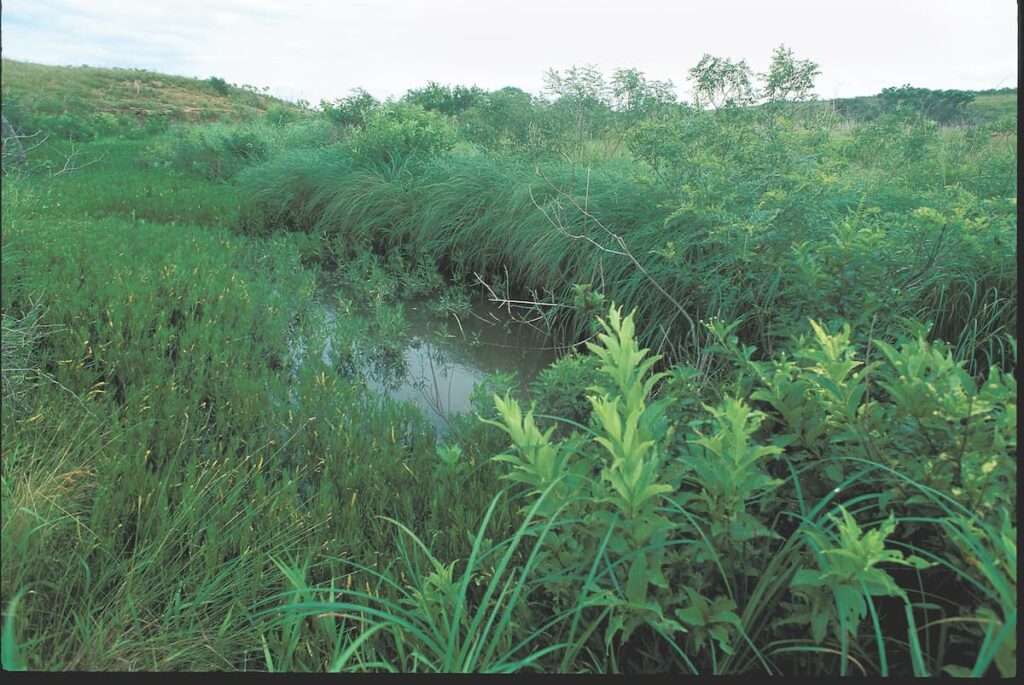
Photo by Ken McCarty
A trail from the campground leads to a reservation-only campsite for backpackers out on the prairie. A mile to the east is East Drywood Creek, among the state’s most outstanding prairie headwaters streams. The area through which it flows has long been a state natural area. In 2007, following eighteen years of vegetation monitoring that demonstrated the integrity of the park’s natural resources, Regal Tallgrass Prairie Natural Area was expanded to include 3,646 acres, almost the entire park, including East Drywood Creek and three other previously designated small natural areas. Prairie State Park is a place where those who wish to immerse themselves in the great North American tallgrass prairie may readily do so. Development has purposefully been kept to a minimum to keep the prairie as natural as possible.
It is a wonder that enough prairie survived to become a state park. But it did, thanks first to the many owners who valued these unbroken grasslands, and then to those who cared enough to preserve a legacy for the future. Park staff over the years have dedicated themselves to restoring and maintaining this extraordinary treasure, carefully pursuing the burning regime so essential for maintaining a prairie. If this legacy is truly to be preserved, however, park scientists realize that this fragmented island ecosystem should be at least doubled in size to provide the habitat needed for species in peril. Also needed is a buffer against changes in land use and other threats from beyond its boundaries. The hope for this park is that it can be large enough, and ecologically viable enough, that the age-old drama of the prairie may forever unfold.
Rare and endangered species here are the northern harrier, greater prairie chicken, prairie mole cricket, regal fritillary butterfly, Mead’s milkweed, auriculate foxglove, and more.
Featured image: In fall, the prairie is a riot of earthy colors amid a bronze sea of grasses, here with winged sumac, rough-leaved dogwood, and tall goldenrod.
Photo by Meagan Duffee
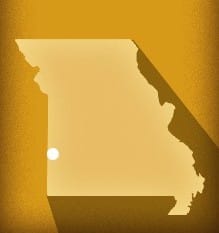
PRAIRIE STATE PARK • 128 NORTHWEST 150TH LANE, MINDENMINES
Read more about how Missouri State Parks are working to restore prairies, glades, woodlands, and marshes here.
Click here to purchase the Missouri State Parks and Historic Sites book.
Related Posts
The Diverse Current River State Park
The richly diverse Current River State Park has almost two miles of Current River frontage and a superb trail network. The fishing is abundant and a lazy float down the Current River is a perfect way to spend any day of the week.
Castlewood State Park
Castlewood State Park has more than thirty miles of hiking and biking trails, eleven of which are open to horseback riders. Experience the feel of a mature floodplain forest with its silver maple, box elder, black willow, white ash, sycamore, slippery elm, and hackberry. Bring a picnic and enjoy the beauty of this park.
Hiking Graham Cave State Park
Head over to Graham Cave State Park to walk in the footsteps of early Missourians.

